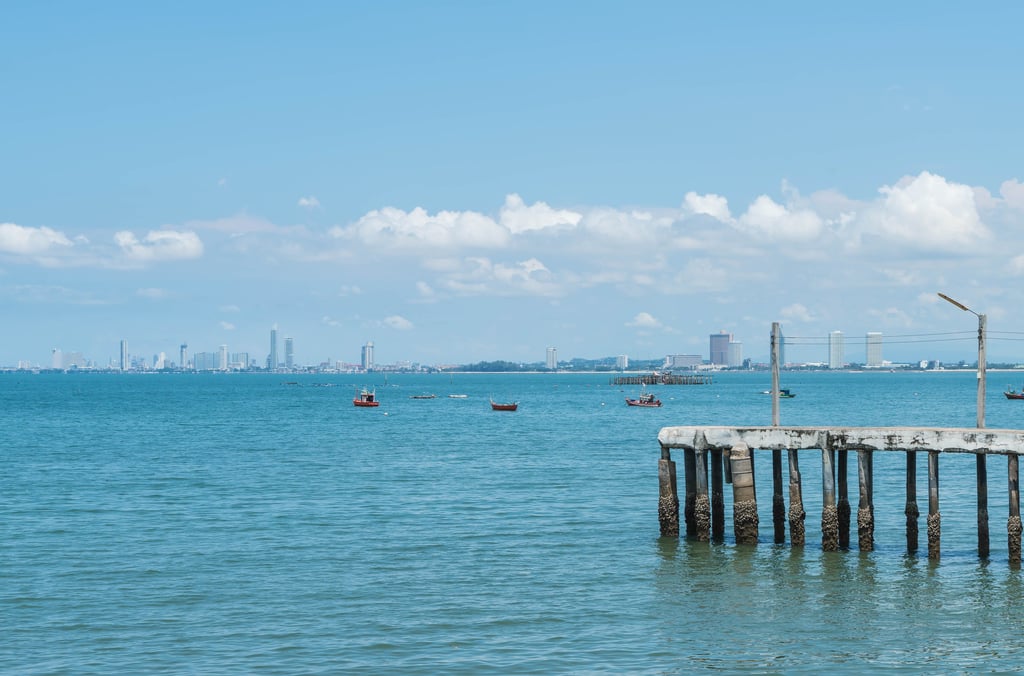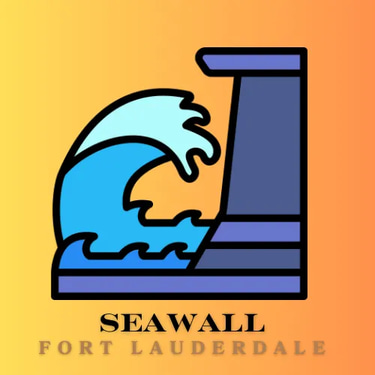Municipal Seawall Solutions Broward County – Flood Control
Learn how municipal seawall solutions Broward County protect infrastructure from floods. Explore public seawalls, emergency management, and cost benefits.
SEAWALL INSPECTION
10/22/20254 min read


Seawall Inspection
How Municipalities in Broward County Use Seawalls to Prevent Flood Damage
Broward County, with its extensive coastline and low-lying areas, faces significant risks from coastal flooding, storm surges, and rising sea levels. Municipalities in the region have increasingly turned to municipal seawall solutions in Broward County from Seawall Fort Lauderdale as a key component of their flood management strategy. These seawalls, often combined with other infrastructure projects, help protect public property, transportation networks, and private communities from potential flood damage.
This article explores the design, purpose, and benefits of municipal seawalls in Broward County, including public seawalls, infrastructure protection, and integration into broader emergency management plans.
It also highlights the cost-benefit considerations, adherence to government standards, and the role of professional seawall contractors, such as Seawall Fort Lauderdale, in maintaining these critical structures.
Understanding the Role of Municipal Seawalls
Municipal seawalls are engineered structures designed to shield communities from coastal hazards. Unlike private or residential seawalls, public seawalls serve the broader population by protecting roads, utilities, parks, and public spaces.
Key objectives of municipal seawalls include:
Flood Control: Minimizing property damage from tides, storm surges, and heavy rainfall.
Infrastructure Protection: Safeguarding critical utilities such as water treatment plants, electrical systems, and transportation corridors.
Community Safety: Reducing the risks associated with flooding events to residents and businesses.
By integrating seawalls into urban planning, Broward County municipalities strengthen resilience against natural disasters while providing long-term protection for vulnerable areas.
Engineering Municipal Seawalls
Municipal seawall design involves multiple considerations to ensure durability and effectiveness. Typical components include:
Structural Integrity: Walls are constructed with reinforced concrete, steel, or stone revetments to withstand high water pressure and erosion.
Height and Placement: Seawalls are engineered based on historical flood data, predicted storm surges, and rising sea levels.
Drainage Integration: Proper drainage channels and stormwater management systems prevent water from pooling behind the wall.
Maintenance Access: Seawalls are designed for inspections and routine maintenance to preserve their protective function over time.
Local governments may collaborate with a professional sea wall contractor to ensure these projects meet stringent engineering and environmental standards.
Emergency Management and Municipal Seawalls
Municipal seawalls are a critical component of emergency management strategies in Broward County. By limiting floodwater intrusion, seawalls allow municipalities to:
Maintain access to roads and evacuation routes during storms.
Protect essential facilities such as hospitals, fire stations, and schools.
Reduce the overall impact of storm events on residential and commercial areas.
Integrate with other emergency measures, such as temporary flood barriers, levees, and pumping stations.
Coordinating seawall deployment with broader disaster response plans ensures that communities are better prepared to respond to extreme weather events.
Cost-Benefit Analysis of Municipal Seawalls
Building municipal seawalls requires significant investment, but the cost-benefit ratio often justifies the expense:
Reduced Property Damage: Preventing flood damage saves millions in repair costs over the long term.
Insurance Benefits: Communities with flood defenses may benefit from lower insurance premiums and incentives.
Economic Stability: Protecting infrastructure and businesses supports local economies during and after storms.
Longevity: Well-engineered seawalls can provide decades of protection, making them a sound long-term investment.
Municipalities carefully evaluate these factors alongside environmental impacts and community needs when planning seawall projects.
Government Standards and Regulations
Municipal seawall projects in Broward County must adhere to government standards to ensure safety, environmental compliance, and structural integrity. Key regulations include:
Coastal construction and setback requirements.
Permitting seawall construction in public waterways and environmentally sensitive zones.
Engineering codes for load capacity, height, and materials.
Environmental safeguards to minimize impact on marine habitats.
Compliance with these standards protects public investment and ensures the long-term success of flood control measures.
Public Seawalls and Community Benefits
Beyond flood protection, public seawalls offer additional benefits to local communities:
Recreational Spaces: Seawalls can incorporate walkways, parks, and viewing areas, enhancing public access to waterfronts.
Aesthetic Value: Modern seawalls can be designed with natural materials or landscaping to complement the local environment.
Environmental Protection: Some seawalls integrate green engineering techniques, such as living walls or vegetated buffers, to support marine and coastal ecosystems.
By combining protection with community amenities, municipalities enhance the overall value of waterfront areas.
Integrating Seawalls into Flood Control Systems
Municipal seawalls are most effective when combined with other flood control infrastructure:
Levees and Dikes: Provide additional barriers against high water events.
Stormwater Pumping Stations: Remove excess water from low-lying areas behind seawalls.
Natural Buffers: Mangroves, wetlands, and dunes help absorb wave energy before it reaches built structures.
This integrated approach ensures a comprehensive strategy for reducing flood risks and maintaining community resilience.
Conclusion
Municipalities in Broward County rely on municipal seawall solutions Broward County to protect infrastructure, reduce flood risks, and support emergency management. With proper planning, skilled contractors, sustainable materials, and green engineering, these projects ensure long-term coastal resilience and environmental balance.
Ready to strengthen your shoreline?
Contact us today for expert seawall construction, maintenance, and customized solutions that safeguard your community and preserve marine ecosystems.
FAQs About Seawall Inspections in Fort Lauderdale
1. What is the purpose of municipal seawalls?
Municipal seawalls protect public property, infrastructure, and communities from flooding, storm surges, and coastal erosion.
2. How do seawalls support emergency management?
Seawalls help maintain access to roads and essential services during storms, reducing the impact on evacuation and emergency operations.
3. Are municipal seawalls cost-effective?
Yes. They prevent costly flood damage, protect infrastructure, and provide long-term economic and community benefits.
4. Do municipalities need permits to build seawalls?
Yes. Construction must comply with local, state, and federal regulations, including coastal construction and environmental standards.
5. Can seawalls include community amenities?
Yes. Public seawalls can incorporate walkways, parks, viewing areas, and even green engineering features to enhance both safety and aesthetic value.
Search
Is your seawall secure?
Don't wait for a small problem to become a disaster. Get a professional evaluation.
Maintenance and Long-Term Considerations
Even the best-designed seawalls require ongoing maintenance to remain effective:
Regular inspections for cracks, erosion, or structural damage.
Prompt repair of any identified weaknesses to prevent failure during storms.
Sediment management to maintain proper water flow and prevent buildup behind walls.
Upgrades to meet changing environmental conditions, including sea-level rise and increased storm intensity.
Municipalities often partner with sea wall contractors experienced in long-term seawall upkeep to protect public investment.
Innovation
Renovating seawalls with modern technology and materials.
Quality
Strength
© 2024. All rights reserved.
